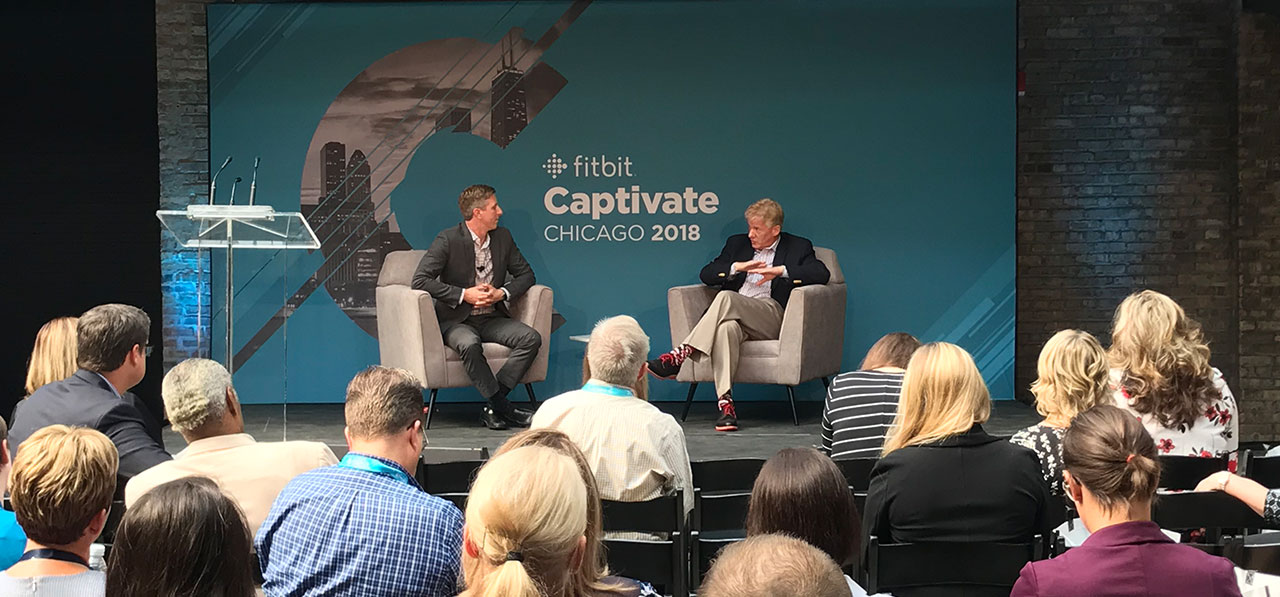3 Key Takeaways from Some of the Healthiest Employers in America
Some of the most inspiring moments at Fitbit Captivate 2018 came from celebrating the Top 100 Healthiest Employers in America (H100), thanks to our partnership with Springbuk. During the H100 panel led by Springbuk co-founder Phil Daniels, three finalists shared important lessons learned, followed by an awards dinner showcasing the top 100 winners. These wellness leaders are engaging the hearts, minds and bodies of their unique employee populations in innovative ways and yielding amazing results. As you plan for 2019, we couldn’t think of a better time to share some key takeaways from this year’s best-of-the-best.
Holistic Approaches to Health are Winning
In addition to traditional wellness initiatives, America’s healthiest workplaces are making commitments to financial health, mental and emotional health, and family health. Nearly half of the H100 winners list financial planning and educational resources among the key features of their wellness programming and those that offer financial education programming are seven times more likely to report increased engagement in their benefits plan. These programs help employees stretch their paychecks, reduce stress, and improve overall sense of wellbeing.
Linking wellness and safety is also a top priority for many of the H100s. Laura Vo, Wellness Program Manager, Sacramento Municipal Utility District (SMUD) extends her workforce safety program out into the field, where line workers must endure strainful positions throughout the day, everyday. Vo’s team holds functional movement screenings for her remote workforce and then defines regimens customized to their specific needs to help ensure safety and avoid injury.
“We know wellness is not one-size-fits-all,” said Vo. “Everyone’s path to wellness is paved differently. We want to offer them the resources that empower them to choose the best options for their lifestyle and wellbeing.”
Reducing Healthcare Costs Starts with Empowering Employees
Reducing healthcare costs can only happen if employees are motivated to take action to improve their own health. While step challenges and raffles can be effective incentives for the competitive-minded, many H100s find that the key to long-term engagement and reducing health costs is empowering employees to make better decisions regarding their own care.
Olga Reupert, VP of Benefits and Compensation, HUB International, found out through much trial and error that the only way to engage and motivate 11,000 employees in 450 locations across the US, Canada and Puerto Rico was to give them a voice. For the larger locations with the greatest health risks or need for help, local volunteer coordinators gather input on what their fellow employees’ ideal wellness environment would look like, then those ideas are facilitated through executive-sponsored and employee-run wellness committees to ensure successful deployment. For all locations, Olga and her team provide a “Core In Common” platform that deploys contests and prizes for programming ideas that can be submitted to volunteer coordinators and rolled out to everyone. “It wasn’t easy to build this kind of program — it took us seven years — but we have found this grass roots approach to be the most effective way to reach our employees and ensure our initiatives are meeting their needs,” said Reupert. “We have seen far-reaching results, ranging from small daily changes to life-changing transformations.”
Executive Champions are the Key to Long-term Success
This year’s Healthiest 100 revealed a substantial amount of executive buy-in within their wellness programming. Leadership support and participation has been a major catalyst for programming growth over time. Many wellness leaders find success in establishing executive champions and committees to help ensure sufficient resources and support for successful deployment.
At SMUD, the CFO leads a Wellness Council, which has expanded over the years to include an executive sponsor for each workgroup across the company. “The employees are extremely excited about wellness, but it’s the executive sponsors who are essential to putting our programs into action, with the full support of our CFO,” said Vo.
Beyond executive buy-in and support for new initiatives, successful wellness programs are backed by executives who lead by example. Amy Walloch, Manager, HR Wellness & Safety, Cambia Health Solutions explains: “Leadership need to be seen as people, not executives. A few years ago, I convinced them to tell their own stories and struggles. The campaign continues to be incredibly effective in inspiring others to change and it has also spurred new programming ideas.” Walloch sited one executive that shared his personal challenges with advance care planning, which in turn catalyzed a palliative care program for employees and family members.
How will these stories inspire your 2019 planning? Want to learn more about this year’s winners? Request your copy of the H100 limited edition magazine here.


